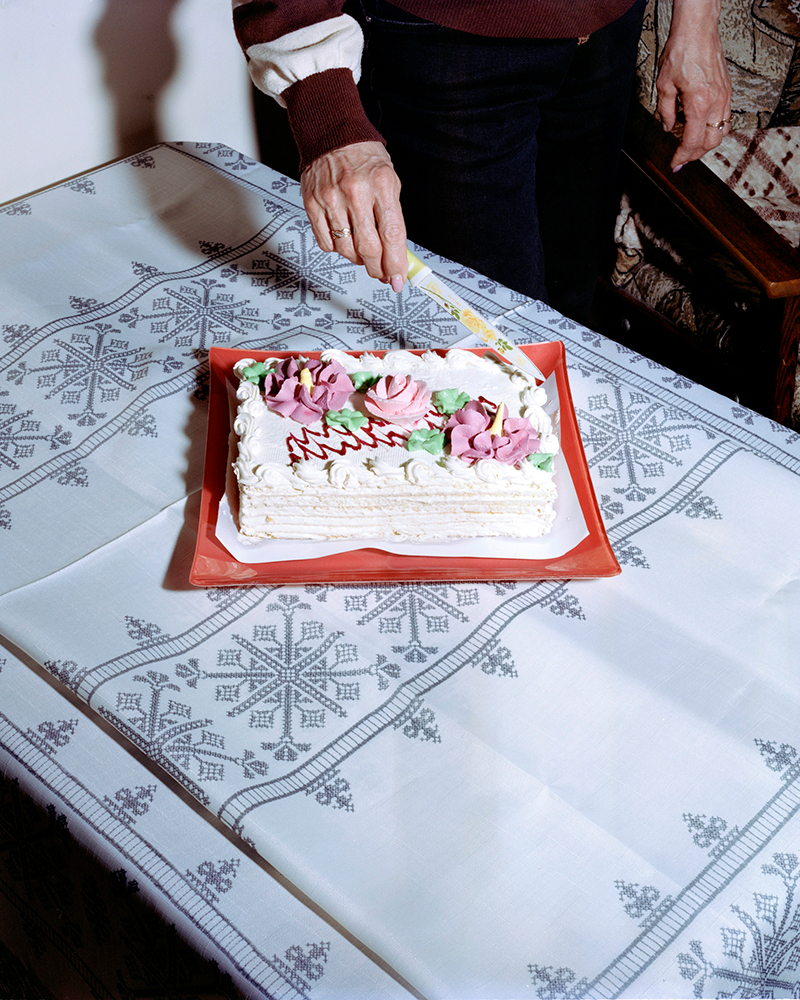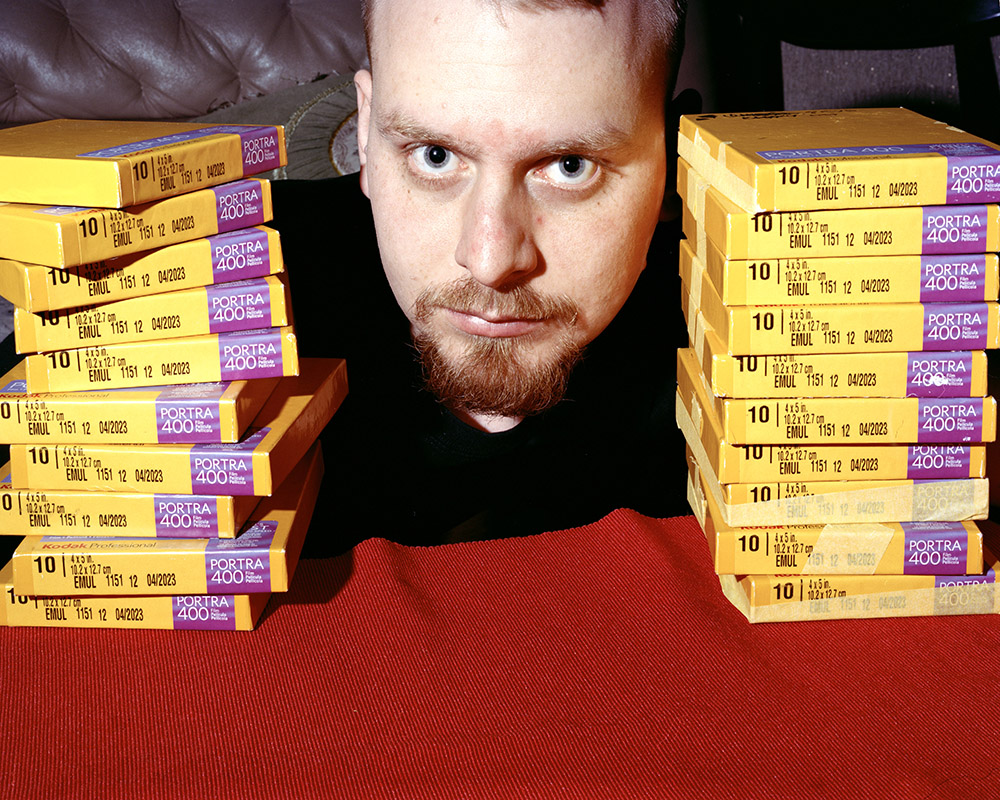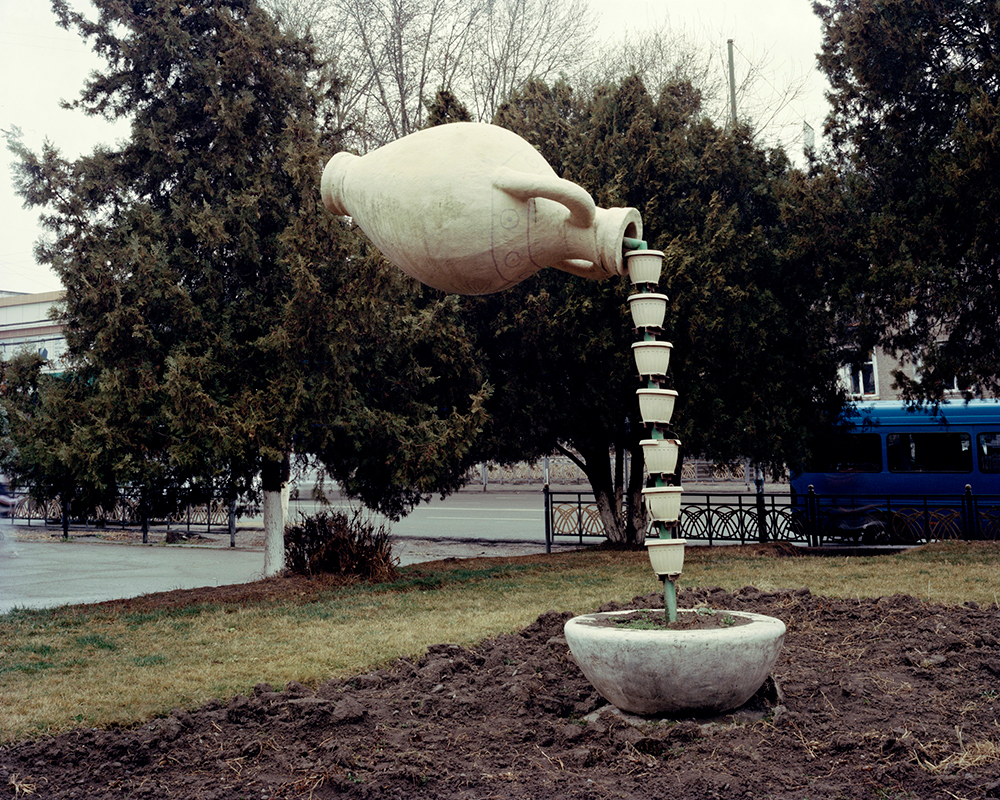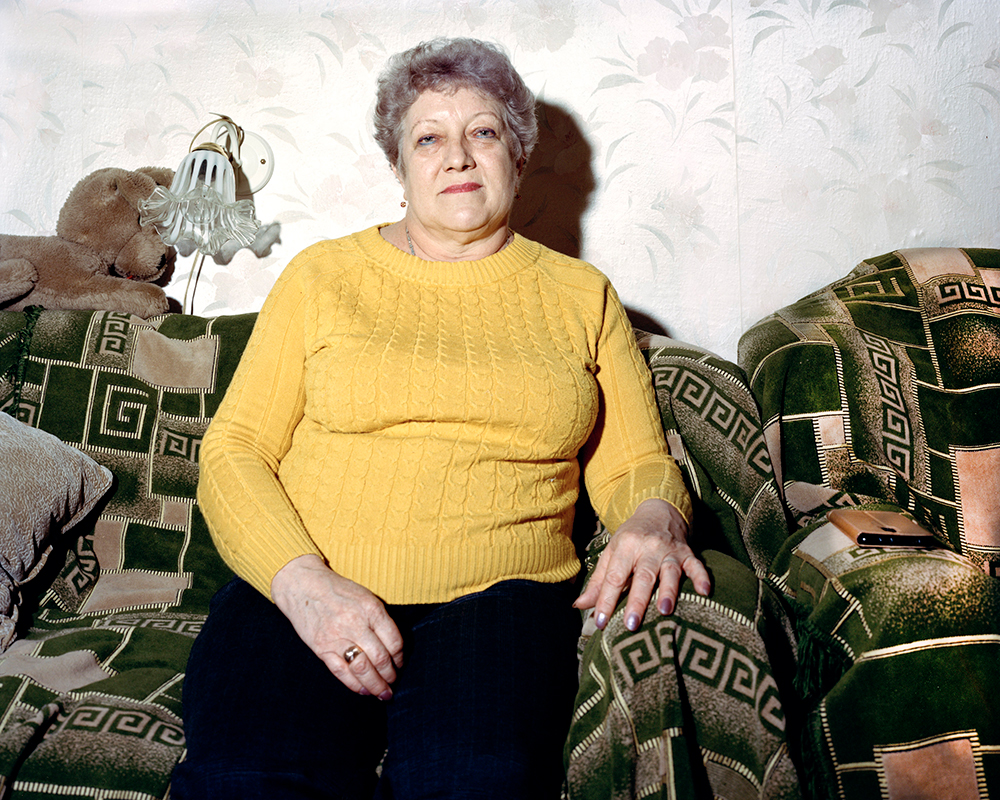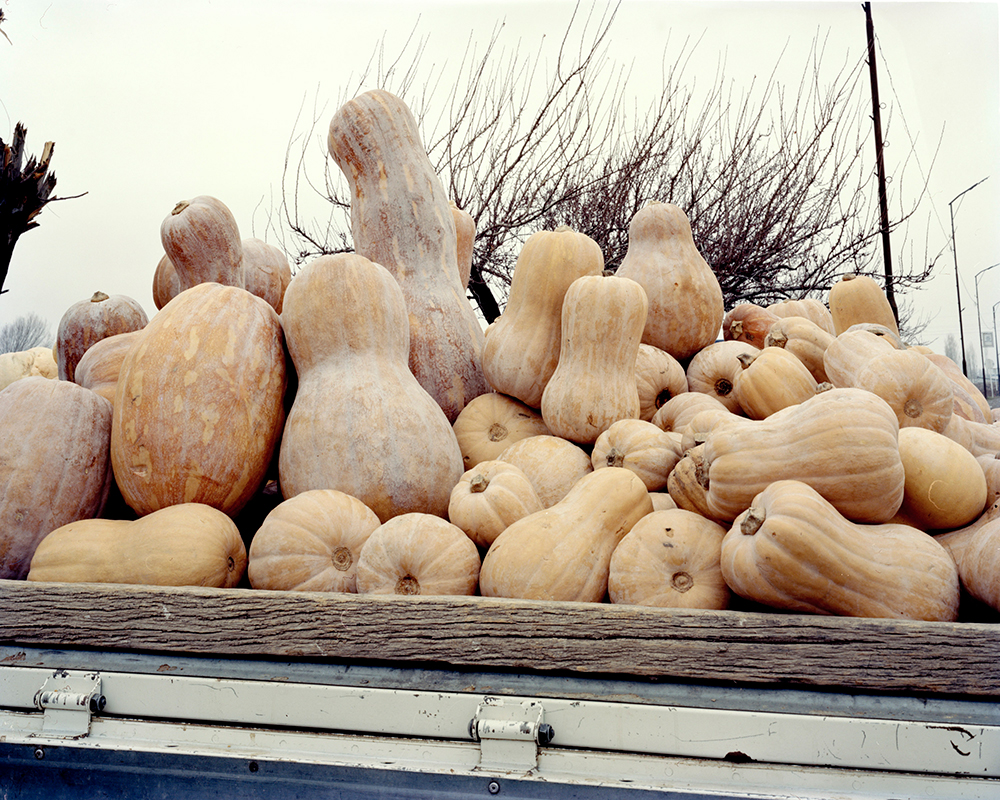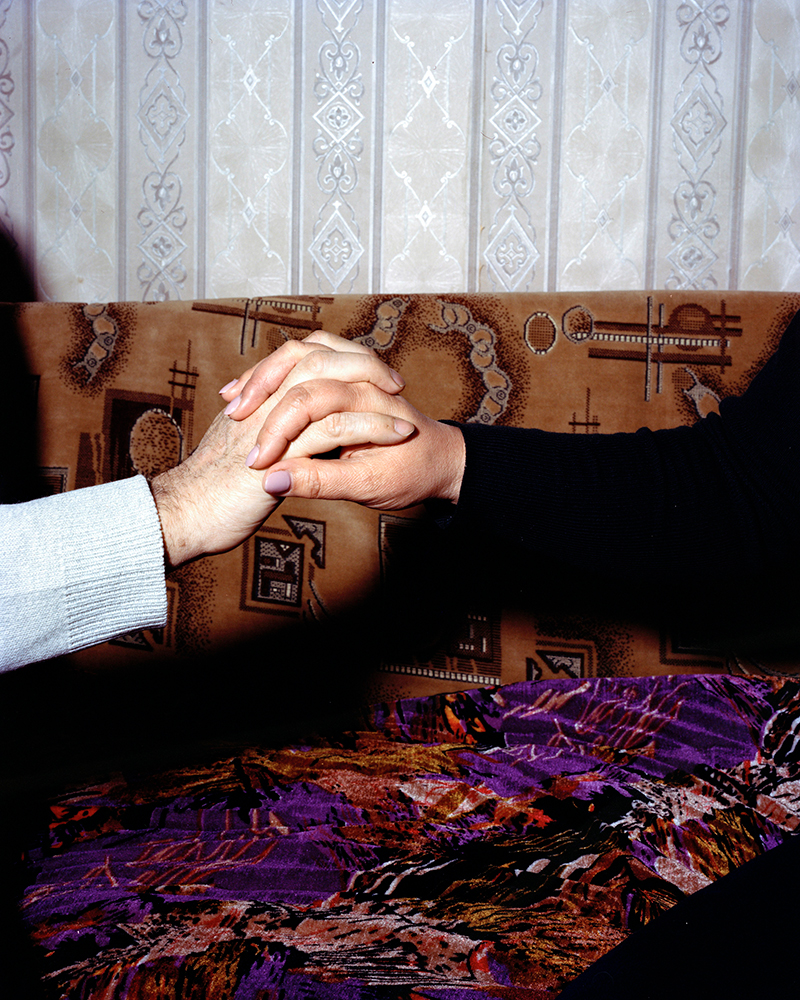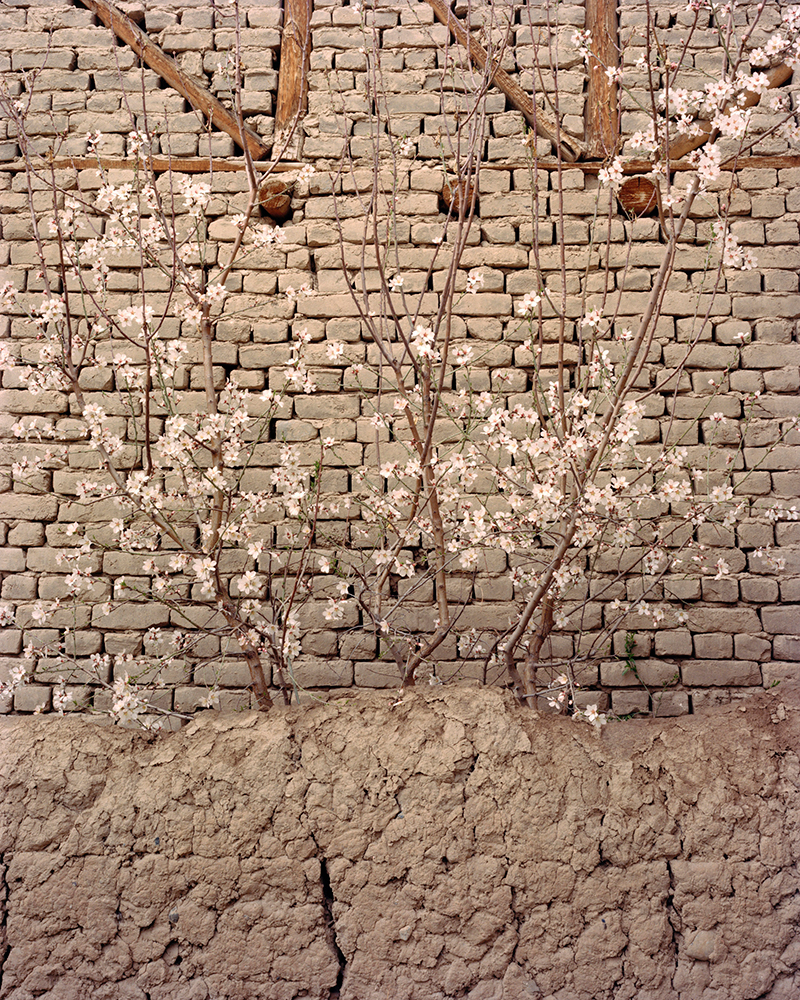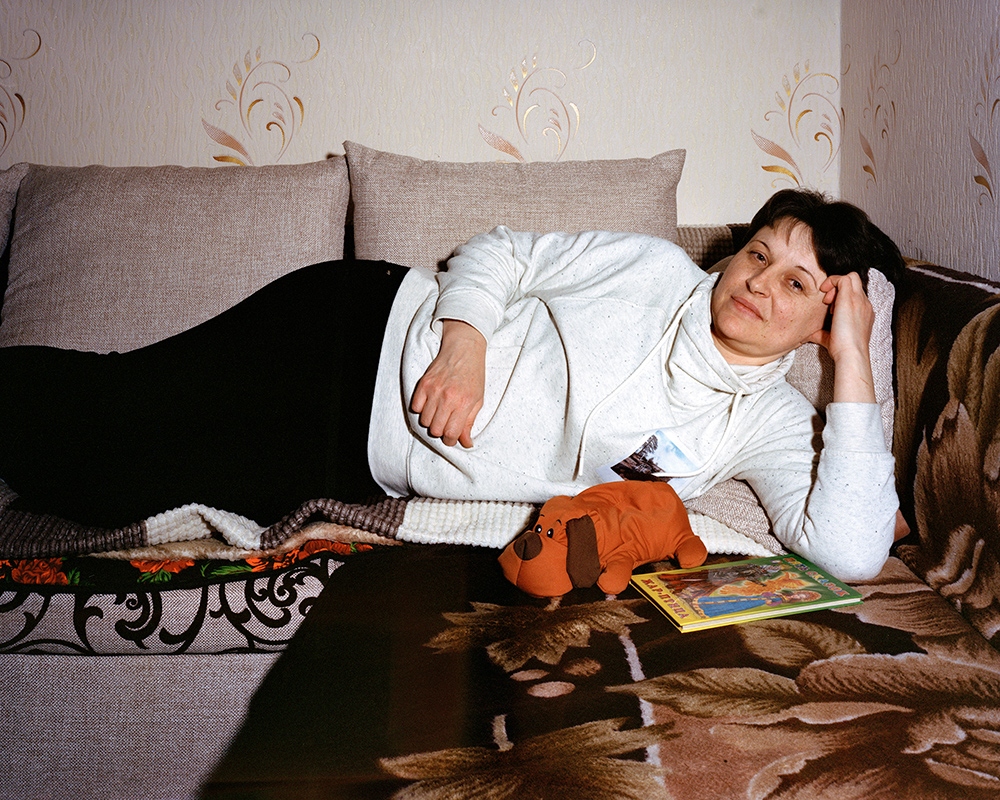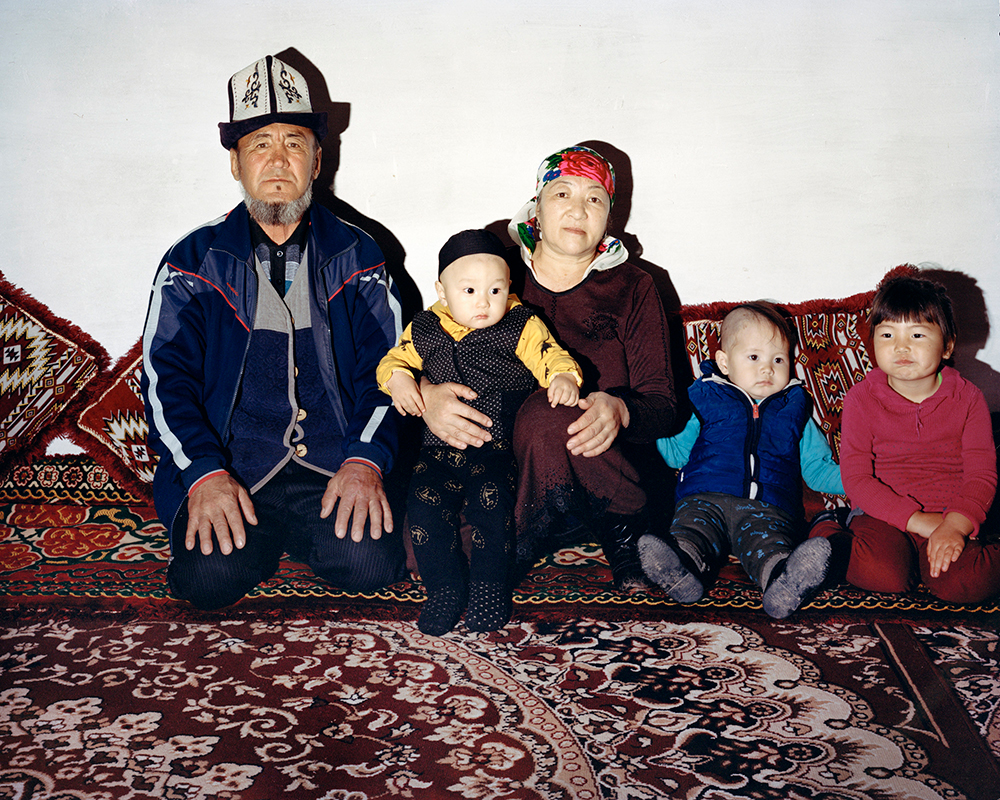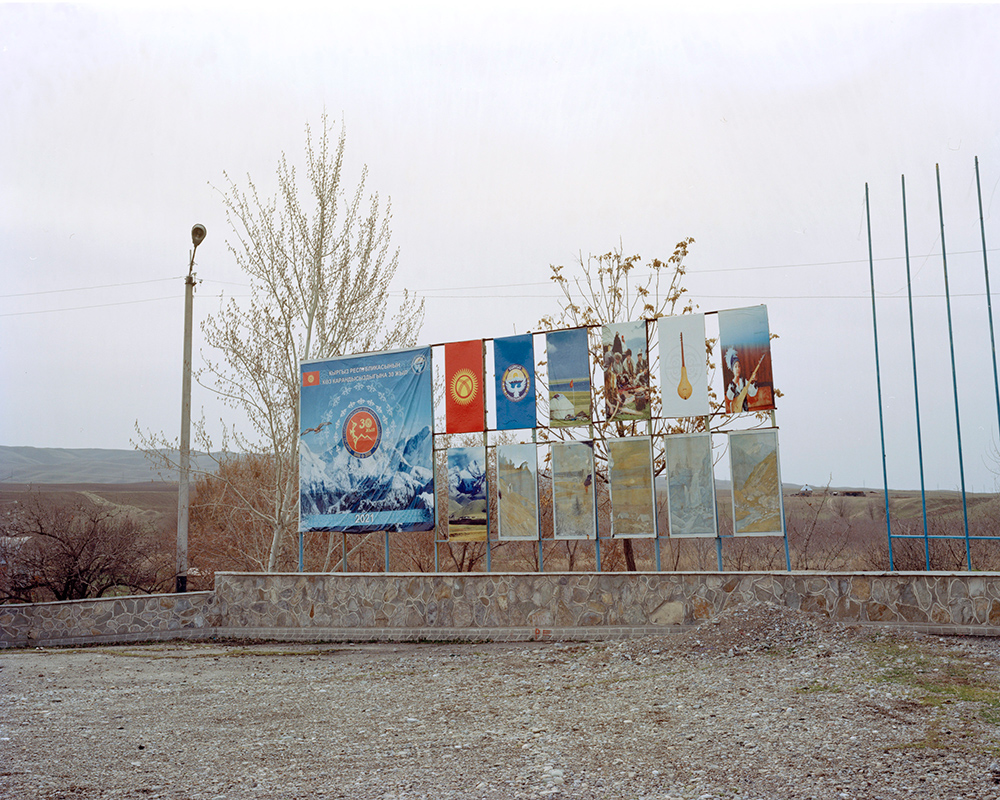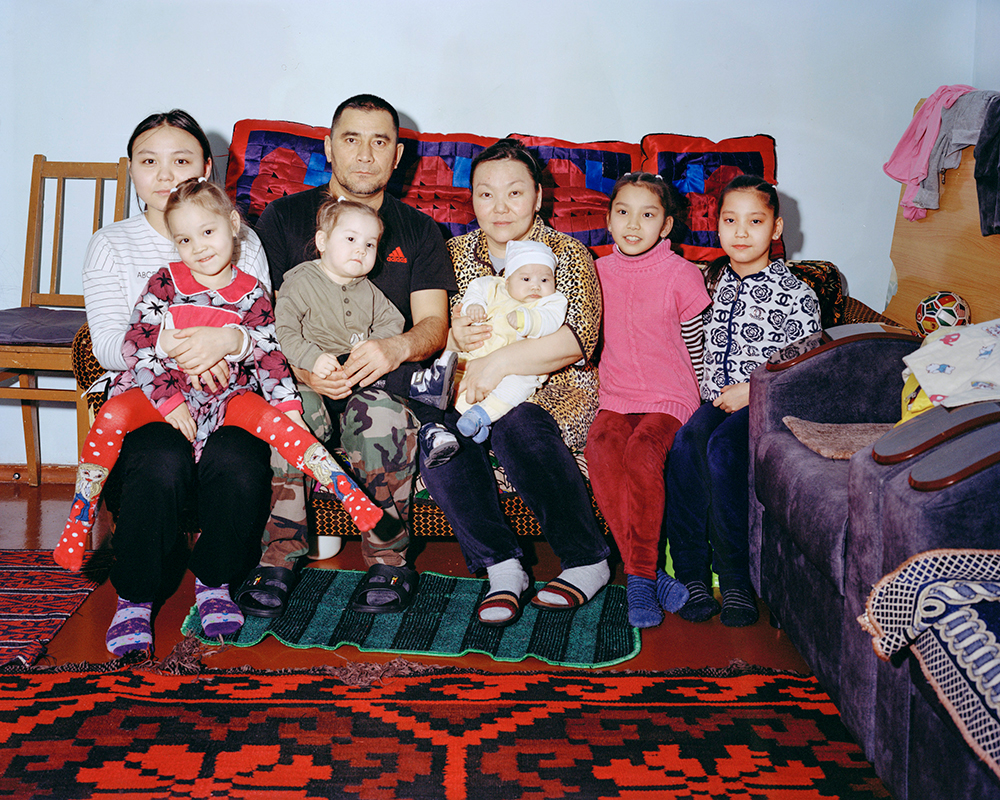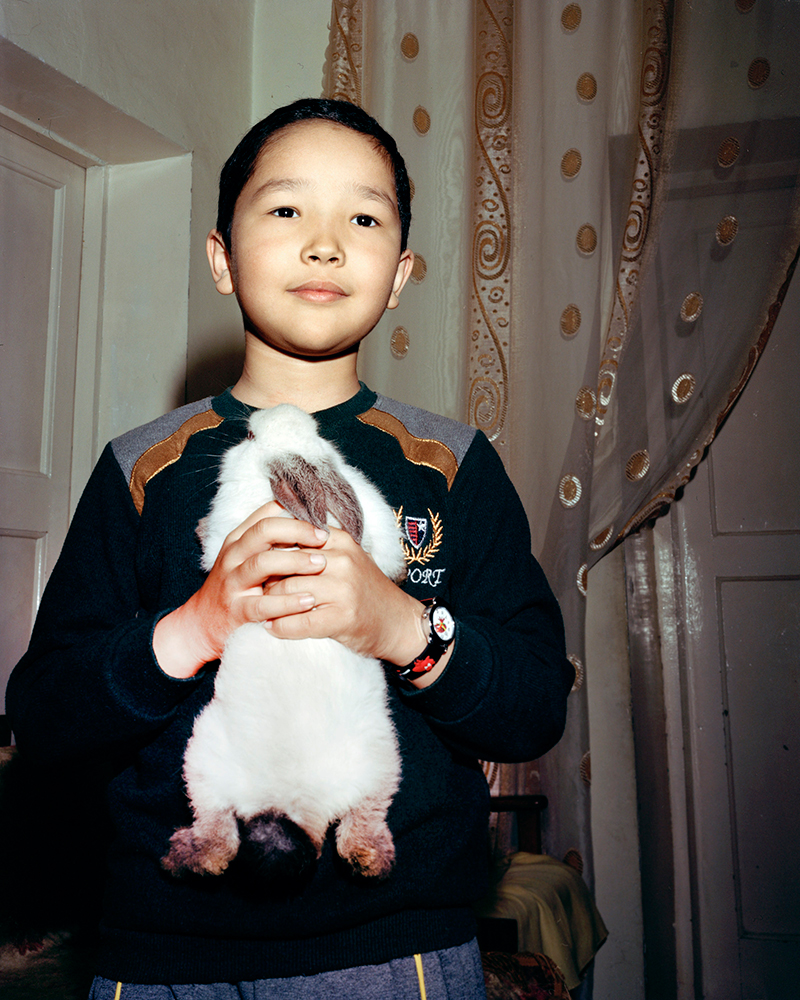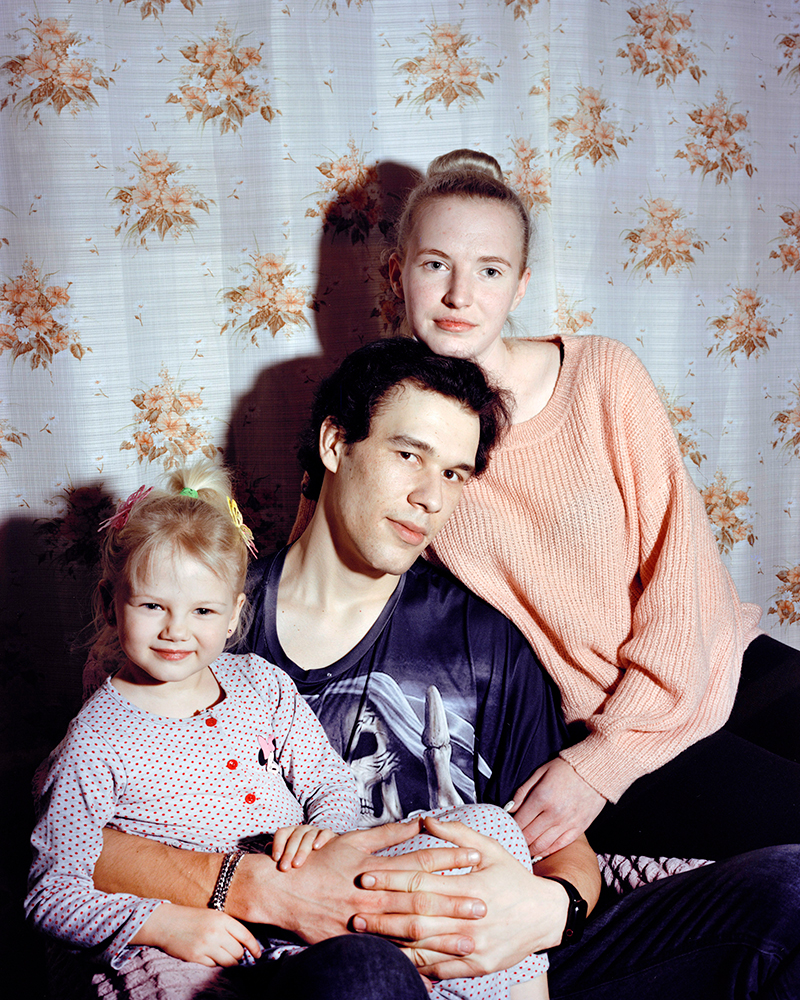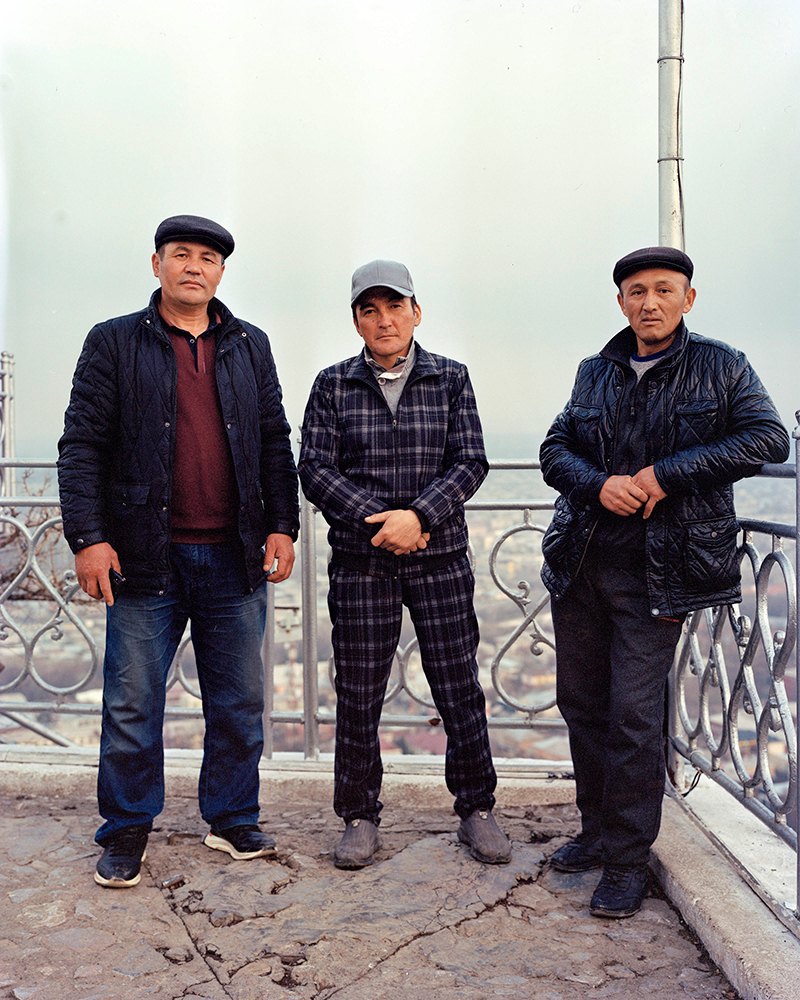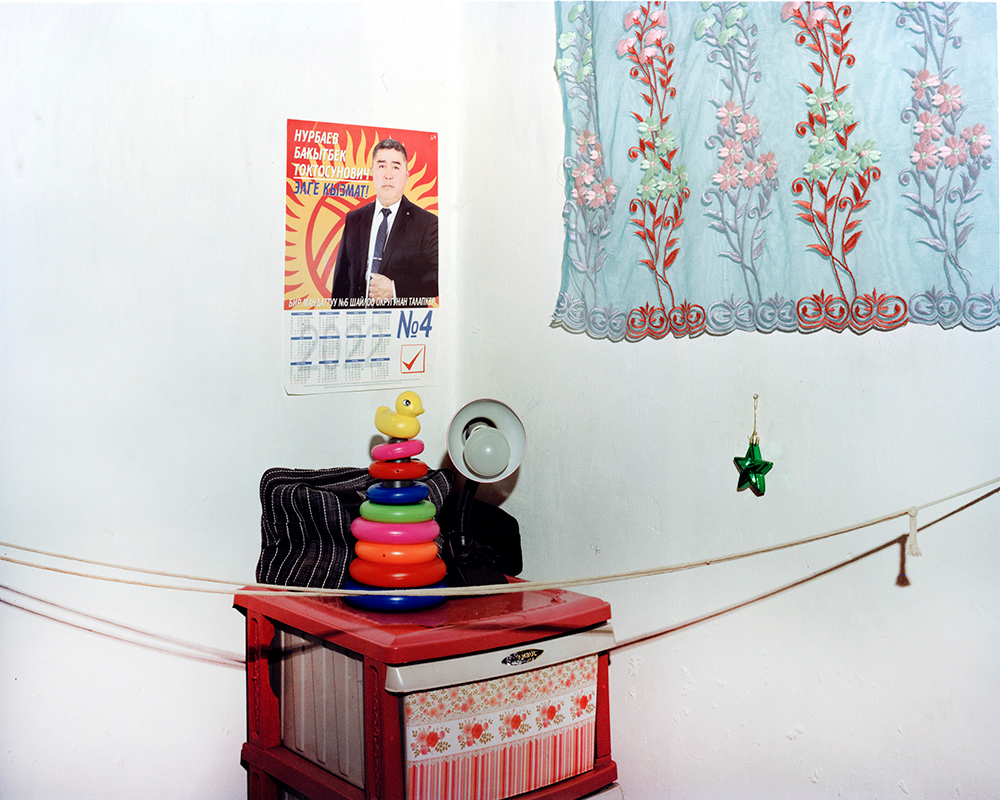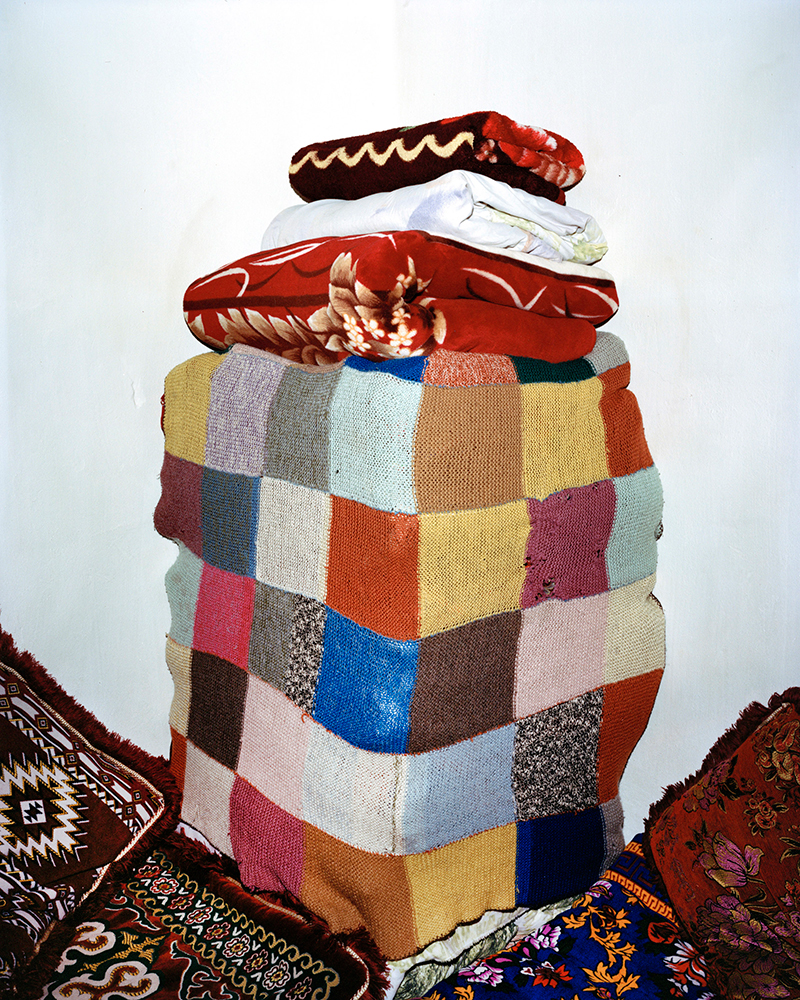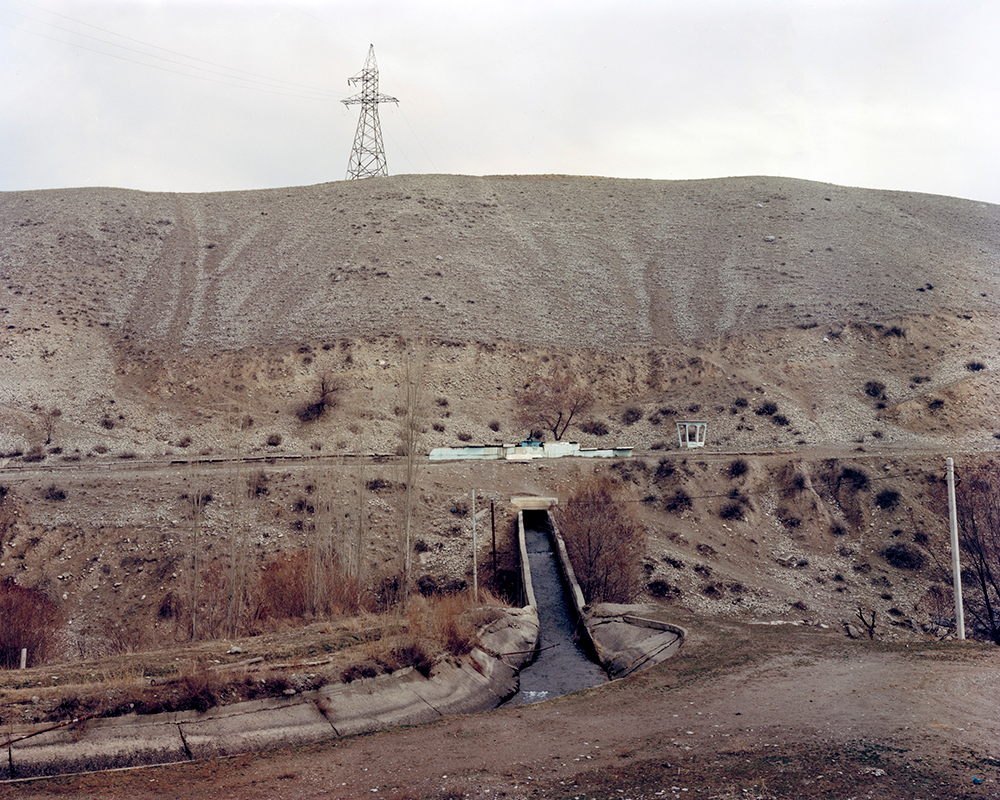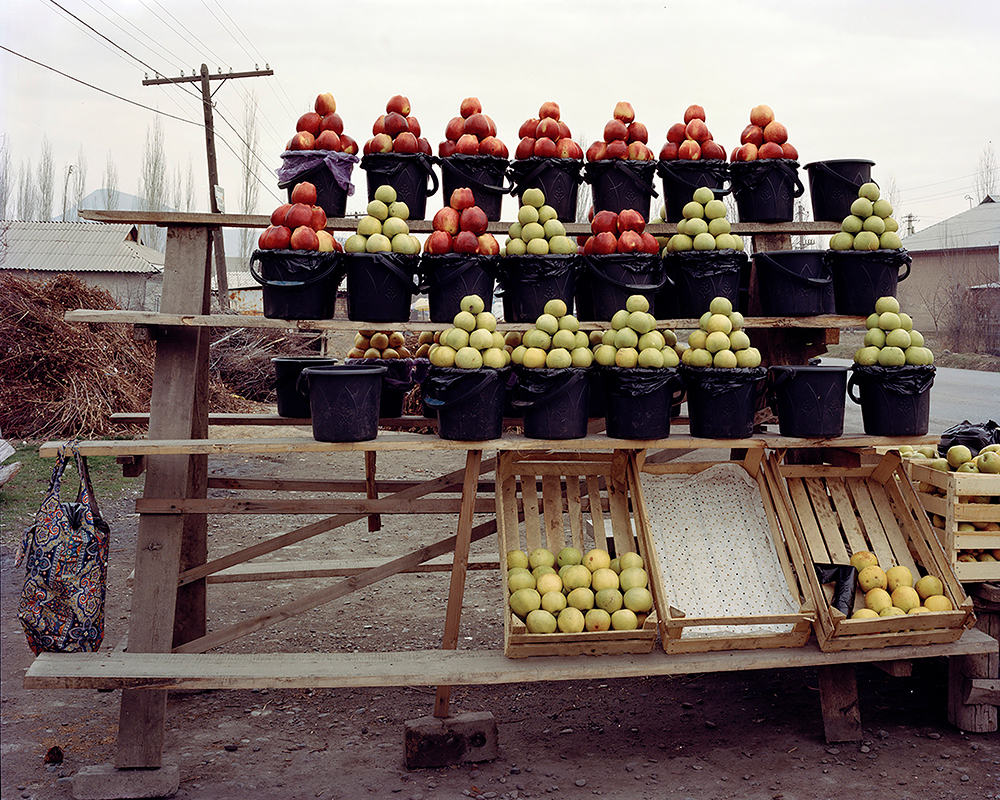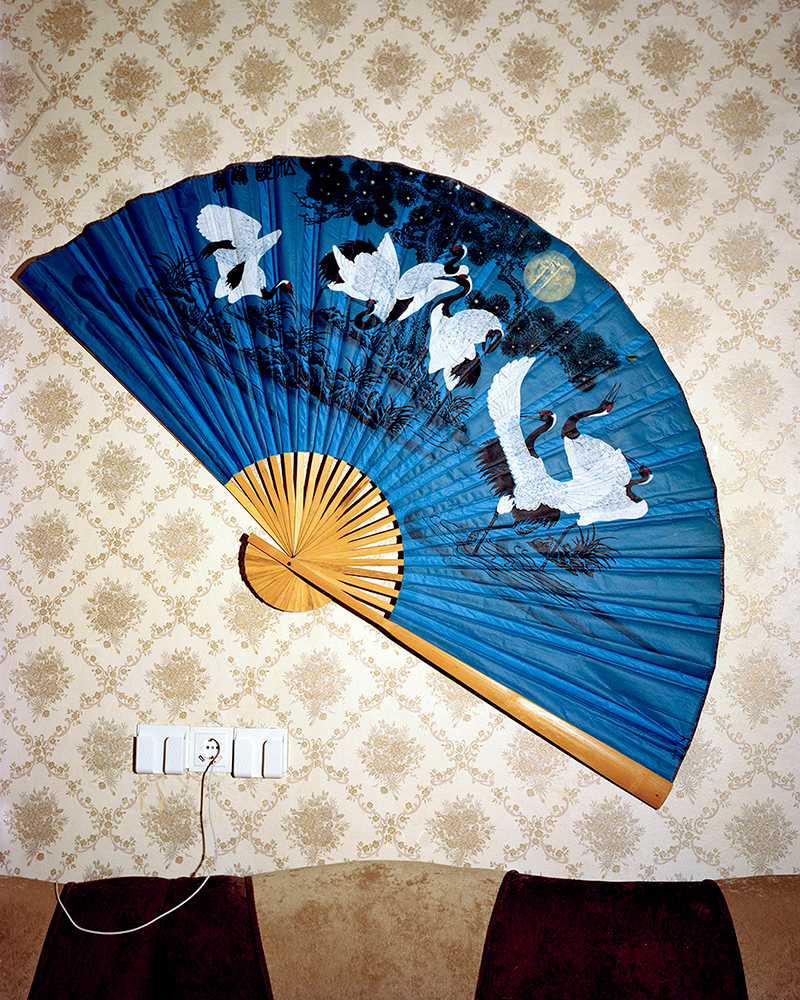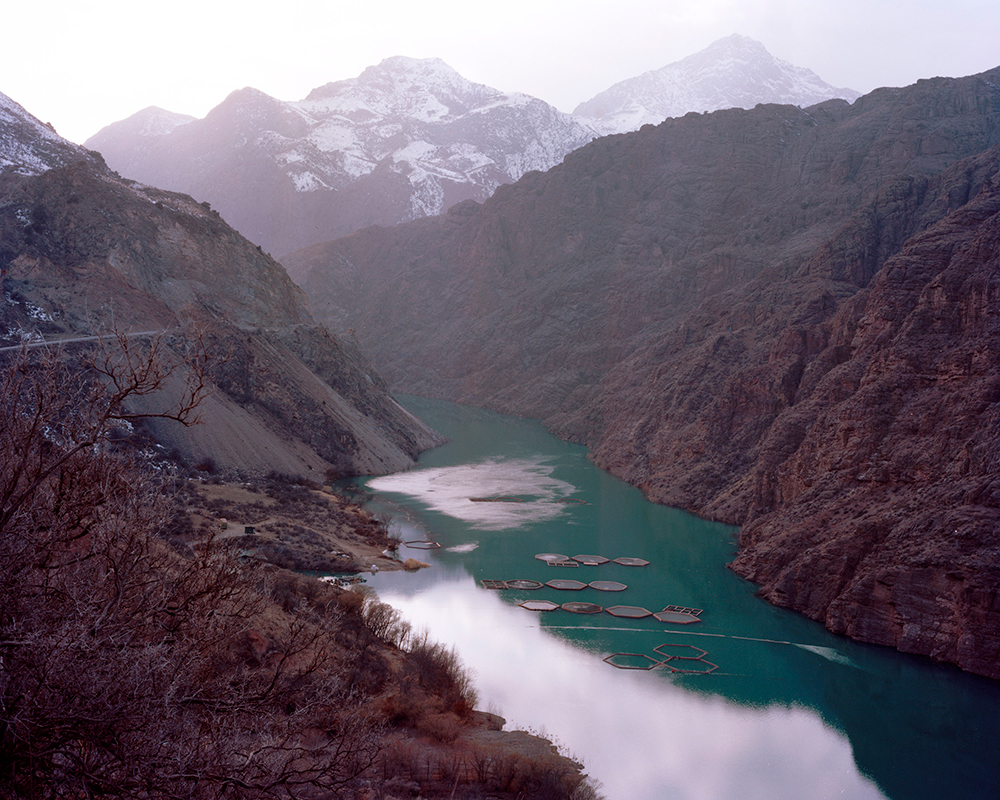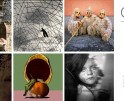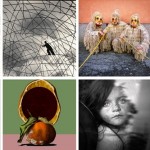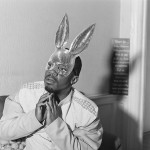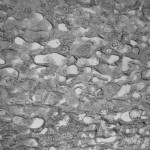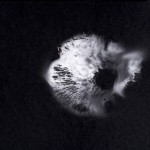Film Photo Award: Alexander Komenda
I was once told, knowing somebody for ten years or ten minutes can have equal meaning, and that those relationships are equally important. I say hello, bonjour, privet, salam-malekoum. I look people in the eye. I listen, I respond. I sit down, we break bread. We drink tea. I ask questions. I show love. I show respect. We smile. We laugh. We argue. I’m not a missionary. I don’t act like I know best or represent a society that does. This always comes first, before any photograph is made, taken, constructed, captured or created. – Alexander Komeda
Alexander Komenda received the Film Photo Award in the spring of 2021. One year later, Linda Moses and Alexander have a chat about his project created with stacks Kodak Portra 400. We are especially excited to feature this work as Komeda was also one of the 2022 Lenscratch Student Prize 25 to Watch.
Alexander Komeda, born in 1992 in Ottawa, is a Polish-Canadian documentary photographer and artist whose work aims to reveal the nuances of everyday life. His aim is to engage with subjects dialectically – to establish rapport and dignify their presence within overarching stories. He is interested in ontological questions, memory and identity. Documentary strategies include the compilation of performative, candid and collaborative approaches. He completed his BA in Documentary Photography at the University of South Wales in Cardiff, Wales, in 2020. Currently, he is undertaking his MA in Photography at Aalto University in Espoo, Finland.
Follow Alexander Komeda on Instagram: @alexanderkomenda
Linda Moses: Where is home for you?
Alexander Komenda: I guess that’s like the root of all evil [laughs]. Well, it is the root of a lot of my work. To answer the question plainly or factually, I was born and raised in Ottawa. Not too far from where you are right now. I went to a French-speaking school, but my parents are Polish immigrants. They came to Canada in 1990, so in the house there were always Polish things and Polish grandmas and grandpas coming. So even though I would say I’m predominantly Canadian, from Ottawa, I also have a very strong European vein that I’ve kept in touch with. I speak Polish and spend time in Poland. I even lived in Russia for a year and learned Russian. This Eastern part of me is very much part of my identity. I’m, of course, interested in identity and how that fits into the everyday. I kind of envy the people who are like, “Oh I’m born and raised Finnish.” No troubles there.
Linda: I think it’s beautiful to recognize the influences that have shaped you over time. My mom is Italian, and when I was a kid, we would travel to Italy every other year to visit family. A lot of my current work is tied to this idea of noticing things I took for granted or didn’t pay attention to while growing up. So, I think it makes a lot of sense to perhaps cope with or to understand yourself as a person through photography. When did you start photographing? Do you have a particular memory of the moment that you felt compelled to photograph?
Alexander: I would say there are two significant memories or stages that I remember. When I was in eighth grade, I got one of these Sony point and shoot cameras that had like four megapixels and it took AA batteries… ever since then I always had this pocket camera. I mean, god knows where all of those pictures went, but it was always something I didn’t really think about. I was like, I’m at a party in high school and I had my camera, or something. And in some way it’s like I don’t count that, but in another way it was something very natural to me. Something to do for fun. And then there came the moment when I left Ottawa. I really had the urge to get out and see the world; this is all I’ve ever known, really. I moved to Moscow for a year. And it really was this stereotypical “I’m gonna do 35mm SLR black-and-white street thing” and I’m gonna try, you know? I took a few workshops, and I felt, ok, maybe there’s something in here. Some reputable professionals actually believed in me. That was between 2013 and 2014, but it wasn’t until I really studied in Cardiff for my BA in Documentary Photography at the University of South Wales in 2017 where I really started to develop my own style and be more conscious of what it is I want and how to better control the medium. It’s like using the force or something [laughs], you need to train first before you can wield it. The more you know, the older you get, you know what it is you want out of life and out of subjects and also technical control. You experiment a lot and you start getting towards what you like.
Linda: How does photographing on film impact your process? When did it become important to stick with film?
Alexander: Pretty simply, I think it’s the materiality and indexicality of film. It’s so tangible. It might be as simple as that, even though all those scanned files are on hard drives and all that. Just being able to have folders and see the negative. Of course, there comes the aesthetic itself and the range of tones in color. I like that punchiness whatever that is. I’ve shot digitally, I have a full-frame camera, but it’s just not the same. I don’t get the same satisfaction.
Linda: I think the materiality is important… the ability to go back to the original and say, I have the image, in a way.
Alexander: For you it’s similar, right? You shoot on film also.
Linda: Yeah. And I similarly started with 35mm. I think I didn’t fall in love with digital photography, I fell in love with film. That’s the only way I can describe it. I didn’t really have the yearning to photograph until I used a film camera. Which probably sounds annoying. But, for me it’s a different experience– it’s a different medium. Slowness is important to me. I don’t want to feel like the image is there yet. Taking the image and coming back and seeing what you’ve made, scanning it, and watching it all unfold.
Alexander: I forgot to mention– it’s like this digestion of what it is you’ve made, which is too instantaneous with digital. Like you said, they’re just different. The instantaneous nature of digital has its own form of digestion which is just different from film. I also understand why this question might be perceived as annoying because we do live in this age where it does need to be justified. There are a lot of people who just don’t justify it. It’s helpful when you’re aware of why you’re interested in the tools you’re using. It’s also not always clear or obvious.
Linda: How did you begin the project in Kyrgyzstan and what was the inception for the work?
Alexander: My father began working in Kyrgyzstan as a human rights advisor for the UN in 2016. I started going there to see him because that’s where he lives. Then it became this place where I was finding myself photographically and as an individual. I spent a lot of time there and got to know many people– some for 10 minutes, some for years to this day. But I was once told that knowing someone for those different amounts of time can have equal meaning. I think I’m interested in identity and the everyday and I’m trying to put this all together– six years of meditation in some way. But the project I worked on with this grant is more specifically for the south. It does fit into this larger picture and backstory, but it’s a region that has geopolitical issues and a history of interethnic conflict. Those things are heavy and difficult to talk about through photography. I just thought; how can I be anti-sensationalist and be slow and include all the different people. The contemporary photo-essay is this type of visual, makeshift boat, onto which you can load layers of themes and sub-themes that are all carried aboard this conceptual vessel. Finding the balance between how people of different backgrounds get along with day-to-day interactions in contrast to the violent history of interethnic clashes and how it all fits together is a very challenging task. How does one encompass it all and depict such complexity and nuance with tranquility, dignity and respect, without exaggerating the tragedy nor overshadowing it? I believe this is the most challenging aspect. Also setting up the circumstances for the more poetic images to present themselves with limited time is extremely challenging. It is exactly for these reasons that this a long-term project, which will take a number of years to complete in order to achieve the proper depth. My ability to speak Russian and my position as foreigner in this case provides me with some form of impartiality, and an ongoing conversation with my father, friends and locals in the region continues to inform my practice on how to best draw this line and direct the suggestive meanings in the work. What does their home mean to them? And what does my own home mean to me? It’s my father’s workplace but now it’s becoming my workplace. There’s all these themes and things I’m thinking about. And the film I got granted for this part of the project is one step in the evolution of what it is this is becoming. I have it on the wall here and I’m trying to figure it out.
Linda: With each visit to Kyrgyzstan were you interacting with people and discussing the conflicts going on? At what point did you realize you wanted to somehow photograph these geopolitical issues? Or did you want to photograph the lives behind the conflict?
Alexander: It was more of the peripheries, as you’re saying. The discussions and interactions are all different. Some of them are more adventurous, like drinking during Ramadan in 2017. Then there are other times where you sit down and you talk about life and you’re witness to Uzbek minorities being discriminated against at the airport. I’ve ended up spending a lot of time, so I witness different facets of life. I went out in the rural areas, I spent time in almost all the different kinds of homes that there are. There’s something in the everyday and the identity of a young nation and what that means to people; how will they remember themselves? How will the way outsiders photograph their country influence them? I’m very interested in history and I understand the photograph as a historical document, as much as it is a fictitious document. I’m also aware that this place is not very much documented. So, in some ways it feels like the Wild West – no one has really come here. It’s interesting to be in a region where very few people have tapped into those things while being respectful to the people and understanding the kind of power that you wield. Some people don’t ever get to be photographed professionally by anyone. It’s important to respect that they invite you in to sit down and talk. It’s a work in progress in many ways.
Linda: I guess you speak Kyrgyz?
Alexander: I speak Russian, but no I don’t speak Kyrgyz.
Linda: I’m very curious how you find people to photograph and how you go about staging images. I assume it’s as nuanced as anything else, happening the way things happen– the way conversations happen. Could you speak about this process and whether it has gotten easier over time?
Alexander: Absolutely. The short answer, in general, is through someone that I know. Someone leads to someone who leads to… I mean at first I didn’t know so many people and I was more ignorant about photographing so I was still in the process of discovering things. Over the past three or four years, I think it’s always been through someone. A good friend of mine is a photojournalist from Kyrgyzstan and he’s a really funny guy and great photographer. We’re not competing; our styles are so different. So he’ll be like, you wanna go there? Or, I have a contact here. Maybe there’s an organization or NGO.. that’s how I reached out to my host in Mailuu-Suu where I made a project about the legacy of Uranium mining and so she hosted me on this last trip and would organize things for me. And then, when I was moving from Mailuu-Suu to Osh, I had a driver and through the driver I asked who do you know, and he’d be like, let’s go here let’s go there.. For my last trip I was shooting for the first time on large format, on 4×5, which you can’t really just walk around.. You have to pre-visualize.
Linda: I want to get into some of the pictures you made on your most recent trip. I’m thinking about this family portrait here. What’s the story behind this picture?
Alexander: Basically, Kyrgyzstan is very in the moment. One day is like this, tomorrow is like that. There’s no planning. My driver was always calling me, like, oh maybe my brother’s gonna come drive you. And I felt – wait a minute, I don’t know this guy [laughs]. And he says ok ok, my dad’s going to pick you up. So be it. I’m sure it’s fine. So then, I’m with his dad and his dad’s super nice and then I say I want to go to this place in Aravan, which is mostly Uzbek. I was a bit disappointed because somehow the Kyrgyz are a minority in this town, because it’s so close to the border with Uzbekistan. I was looking to get more Uzbek representation in my work. So, we get to Aravan, and in Kyrgyzstan it’s common to offer you tea. Tea means you’re going to eat and it’s bread, a meal, candy or chocolates, or what have you. So we sit down– the men are in one room and the women are in another; it’s a very segregated thing. The women bring the food.. It’s this kind of society. And then we had tea. I remember feeling a little uncomfortable because they were speaking Kyrgyz for a while and then there was some tension from not being able to speak the language. But then there was this moment when they felt so honored. And I said, let’s take a picture. Then we started to have a bonding. They were all very grateful. His wife was said, God must have sent you… they were an average family in this town. That’s what I’m interested in: everyday people. I like August Sander a lot and the way he photographed everybody.
He gave me this hat after, and I felt really good. I was just happy that I could be there. What are your thoughts on the image? It’s interesting for me to hear the other side.
Linda: What I find striking about this image and several others is the use of flash makes it so that every time I look at the picture, I see something else. I think that the details of the texture, the patterns, the rugs, the wallpaper in other images. I find myself coming back to those parts of the picture. Of course, the expressions of the people you photograph are so striking. But I’m equally interested in the backdrop, and the way that everything is important and telling. I feel there’s such a tenderness to the way that they look at you. It’s clear that it is an honor for them to be photographed, and I think that comes across. It seems like they’re so happy to welcome you in. I know a lot of people say their work is collaborative. Would you say that yours is?
Alexander: I don’t feel comfortable using that word. Because at the end of the day, you’re still the director. You’re still the one who is calling the shots, you know. So, collaboration is really 50/50. For me, the closest to a 50/50 type collaboration is respect – you show respect and you’re grateful. You are coming into their home and talking and eating and drinking tea. It’s hard to make that claim. Maybe it’s a question of what the collaborative spectrum in photography is; it depends on the process. It’s quite ambiguous.
Linda: I feel similarly strange about using the term. But I do get the sense that your photographs are expressive of the nature of conversation. It does feel like it’s going two ways, whether or not you use the term “collaborative.” I find it relieving to see these pictures, because much of the time, documentarians and photojournalists aren’t self-aware, or aren’t aware of the ways that a photograph can be unidirectional.
Alexander: Yeah. It can be exploitative and violent.
Linda: And similarly in this image [below], it just feels like there’s a desire to be photographed.
Alexander: It felt like a miracle in some way. It was one of the most beautiful things I’ve ever seen. A family of six daughters. I don’t know, I spent almost a week in the town and they lived across from where I was staying. I would see him come out, taking care of one baby and then another. It’s not a society where fathers are often taking on these parental roles that are pretty normal for us. To see that was really beautiful. Of course, he has a very striking face, the whole family is amazing. Coming back to your earlier question, I was able to photograph them because.. I photographed… Tanya’s friend, Lena and her daughter Kira and her teenage friends. I think she goes to school with one of the daughters and she helped organize this. In that way, the collaboration gave back.
Linda: I find it wonderful to be able to make those connections. Sometimes you take a photograph and it’s over, but other times you end up talking to someone for three hours in a park and you go away with these stories feeling like you really connected with a person. It becomes transformative.
Alexander: Absolutely. It’s true. There’s an amalgamation of connections that you’ve made or good feelings that are like windows that perhaps show in the photograph. Maybe some sort of aura. I’m now alluding to the image of the boy holding the rabbit.
Linda: Ah, yes.
A: Zahid’s son. Zahid used to work with my dad at the UN office, and for the longest time I thought he could help me and I don’t think he understood what he wanted. But the Uzbek community is much more closed off and not as willing to be photographed. I think it was my last night before I was gonna leave and he called me. He asked, do you wanna come over to ours? I’ll just come and pick you up. I had just photographed all day– it was about 10 pm– and said yeah, let’s go. It was really special. We ate, we photographed, we talked and had tea. I spent about three or four hours there and came home around one or two. I had met him before. He had helped me in 2019 when I was making work in Mailuu-Suu. I was in Osh and he drove me to the airport. That’s who I had witnessed being discriminated against. The Uzbeks are heavily discriminated against and profiled. But the kind of feeling of being with them and everyone’s like, whoa who’s this guy? But everyone’s in a nice mood and there’s a sense of peace. You aim for these things and somehow they come to you in the strangest ways. This must have been around midnight. I wouldn’t say I was tired because I was so in the zone. Maybe that day I had shot almost twenty pictures. It felt like I had shot a lot; I remember I was changing the holders a lot.
Linda: This photograph is so beautiful. Sometimes there are just no words.
Alexander: Words can be limiting.
Linda: I feel that his expression is so hopeful. If I’m understanding correctly, he is Uzbek?
Alexander: Yes. And he’s facing the worst odds. His dad Zahid was telling me, you know, we could never be president or in such and such positions in this country. Yet, the kids are so nice and so smart and so positive despite all of it. There’s just something so beautiful in that. He had a pet rabbit and I was felt, yes, definitely get the rabbit! [laughs]. And of course, the food is just insane. Uzbek food is incredible. And Zahid’s father came so it was three generations. This whole trip was very family-oriented. And with my partner we’re expecting a child so maybe this is also some subconscious navigation toward family. I feel that maybe everyone, on some level, is projecting or including their family in their work.
Linda: I think no matter what we photograph, part of our own wishes or projections or what we find beautiful in a picture is telling as to what we seek in our lives.
I’m sure there is a complex answer to this, but what is the major source of conflict between the Kyrgyz, the Uzbeks, and the Tajiks?
Alexander: Yes. Well, it’s complex and also not. It’s complex because the conflicts are mainly between different groups. So, it’s usually Kyrgyz and Uzbek, and Kyrgyz and Tajiks. With the Kyrgyz and Uzbek it appears that it’s not so bad right now because it’s been almost 12 years since their last serious conflict. In that conflict, hundreds were killed, hundreds of thousands were misplaced, and there was sexual violence. It was very nasty. In 2005, there was a similar conflict. After the 2010 conflict, any Uzbek in power got thrown out and Kyrgyz nationalist powers were consolidated. The Kyrgyz amongst themselves have six clans in the country. So, the president in power is one clan and the previous president was a different clan and the previous president is sitting in jail because the current president knows that he’s robbed millions of dollars. Anyway, it can be complex. They aren’t supposed to talk about the clans with foreigners. With the Tajiks and the Kyrgyz, it’s mostly in Batken, and the conflict was reignited a year ago in the spring. That is specifically concerning water. It’s mostly contentions around water and because the Soviets had old canal systems that used to be distributed somewhat equally; now, someone may have the valve going more towards Uzbekistan or going more towards Kyrgyzstan. That original border between those states was drawn up by Stalin. The intention was to keep them in conflict and easier to control. That’s the conflict in a nutshell, but of course it’s very complex. The Uzbeks and Kyrgyz are very different, culturally. The Kyrgyz are essentially nomads historically. They have yurts and they drink kumis (fermented mare’s milk), and they are mountain people, even though there is this whole new youth in Bishkek and things are changing slowly, the sense of tradition is quite strong throughout the country. Uzbeks have been around; Samarkand in the 15th century was a very important center for knowledge and math in the Islamic world– they have a much longer history with regard to written language and architecture and cuisine. And then the Tajik are also mountain people. I know a lot of things but I’m also not a complete expert, all of this is a work in progress. In 2010, the Kyrgyz were the belligerents– the ones that provoked and had the least victims. The Uzbeks are the bigger victims in that conflict and they were discriminated against more. But the Kyrgyz would never say that; they would say no, no, it’s the Uzbeks that started it. But, like I said, because it’s been 12 years, that conflict has settled a bit more. The conflict between Tajik and Kyrgyz is now the main problem; there’s no border there. When I was near there, in Kyzyl-Kya, there were a few shootings in Batken. I wanted to go all the way to Batken, but I knew there were several things going on, plus the war in Ukraine. Also, it was a very dry winter, so they were expecting these conflicts to be more severe now in the spring.
Linda: Do you have conversations about the conflicts with people you’re photographing?
Alexander: I definitely ask. Mostly the ones affected. The Kyrgyz won’t take it seriously most of the time. The two Uzbek families – there’s one picture with a couple holding hands. That was in Mailuu-Suu and I asked them. Their opinion on the matter was to simply move on, work and you not to focus on that. Not a big deal. But also, they lived in a town that was so different historically. Mailuu-Suu had Moscow’s protection; they could basically have anything. The history of the town affects that. And it wasn’t really involved in the 2010 conflicts; that was mostly in Jalalabad and Osh. But Zahid said he experienced it firsthand. We talked about it again recently. You could never have an Uzbek leader of the country. In some ways I would have liked to encounter more Uzbek families, but it is much more closed off, so it’s uncommon to have access at all if you’re not Uzbek. They’re afraid– they have gated houses and they have courtyards behind the gates. It’s really hard to have access. I’m so happy that I was able to meet a range of people. Of course, in Mailuu-Suu, there are many ethnic Russians, as you see in the pictures. They’ve remained from Soviet times. It’s less common.
Linda: Like this couple?
Alexander: Yeah. They were like out of a book or movie. They were super tall– both over six feet. The grandma was home with the daughter.
Linda: I’m interested in the way you write about the work and about the camera as a tool for peacemaking. Could you talk a bit more about how you conceptualize photography in this way?
Alexander: I think it’s just using the camera as a passport, really. You have an excuse to go into someone’s home and make their day better. It can be that small, and that’s fine. You don’t have to make a million-dollar donation, but that also has its place. Relating with these little everyday things that you’re left feeling that interaction was cordial and pleasant. Maybe that idea of hope and contributing to peace in that way, just being considerate and listening and being part of something. Maybe that is a small step in some sort of wider piece of the grander puzzle. I can’t flex and claim that these images are going to directly contribute solve such a complex conflict. Of course, that would be good. But I think the small contributions… I’m conflicted in some way that of course the small thing can give some hope and contribute to peace. But I cannot attest that the photograph can be proven to change things in all cases.
Linda: They are part of a process of communicating.
Alexander: Yeah. It’s the process that’s the peace-building tool rather than the actual product or finality. Of course, it’s important but I think it’s really the process: sitting down and having conversation. Maybe photos are the products of conversation… the end, or the middle, or the beginning of a conversation.
Linda: They represent that kind of convening. If anything, a beginning but not an end. The power of listening as a tool for the resolution of any kind of conflict.
Alexander: Sometimes the things that are so overlooked, such as listening or being present, are actually enough. I think it can contribute to something greater. These things are hard to measure. But if you give yourself honestly and you’re part of it, learning and growing with the people you’re photographing, then it is this very beautiful experience. You are left with that magic. The magic of interaction more than the magic of the photo. But of course, that’s the reason you’re there. If the photos wouldn’t happen then that process couldn’t happen. I think it’s really important, especially in Kyrgyzstan, coming in as a foreigner, to be conscious of those things and aware of the history. But also, letting that history inform you while also letting things go and let them develop in an organic way. I don’t know if that makes sense. Not to dampen or politicize the process itself too heavily. If you just remember to stick it to the good old cup of tea, etc. There are these classic forms of interaction. We don’t remember times of peace. It’s always wars that are written about. That also really fascinates me as a photographer– it’s only ever that conflict that’s written about. The everyday is very seldom in history books; it’s always some sort of drama, some king getting beheaded. What was the tailor doing on that day? What was his family situation? I want to historically be able to contribute to that.
Linda: I absolutely love that concept. I even see it taking shape in these non-portraits. Images that reflect your own process of seeing and noticing things that might be overlooked. These pictures are equally telling as part of the story. I can’t help but see everything in terms of metaphor. Some people might see these images as the “rest” or “break” images, but I’m tired of that concept. For me, they are necessary.
Alexander: Yes. That’s a very good point. Even for me, I’m like, well the portraits hold the top importance, and then these other ones are break images, but you’re right. What if you looked at it the other way around. It’s important to give them equal value within the rhythm of the series.
Linda: 100%. Like this picture here.
Alexander: I think that was the same place where I did the group portrait we talked about earlier. I remember it was electric. I saw this object right away when we came into the room to drink tea and eat. It was truly amazing. The grandmother of the children approached me after the portrait session and said that God sent you. For me, the smallest details, and the simple daily activities, their presence and our connection felt incredibly genuine. Returning to the object, it’s also the perfect metaphor and what I’m looking for. Here’s this place and as people we’re all carrying these different identities, a collage that is part of one entity. And also, the pure visuality of it. It’s pleasant. It’s what’s amazing about, like you say, the overlooked things, or the glitches.
Linda: Also the way there’s so much care… it’s the folding that does it for me. Well, not just the folding. But I find myself coming back to this desire to compile or organize things in a set place. To give things a home. And I think that happens in the image of the apples as well. A desire to show care.
Alexander: Actually when I was photographing the apples, I told the guy selling them that I was doing a project and he just gave me roughly five pounds of apples. He was like, here, take all these apples. Of course I was like, how much? And he was like no, no, this is a gift.
Linda: So beautiful.
Alexander: A lot of people are nice, you know. People are mostly nice. I think the mean ones are anomalies.
Linda: I look for that in people. And I get the sense that you look for that kind of connection when you go out as well.
What are your next steps for the project? How does the work continue or evolve?
Alexander: First, it’s going to be putting all the work together into a book dummy before I go for my last trip. There’s a bookmaking course here at the university. The goal is to make a first series of dummies from the work of the last six years. And then before the film expires in April of next year. So, my plan is to go back to Kyrgyzstan around January or February and return to some of these places again. At that point, it’ll probably be a similar way that I was working now. But maybe I’ll also take more time, next time. If I have the luxury for that. I have 92 sheets left.
Linda: That’s awesome.
Alexander: Also, this was my first time shooting 4×5 so there was a lot of stress in terms of the process. A lot of sweating and running around like, oh, is this right? Is this right? So I’m actually quite happy from a purely technical point of view that there weren’t any major mistakes. Unfortunately, there were some mistakes in the development. I developed in Latvia and there was some uneven developing. But somehow it ended up being mostly on the images that weren’t the best.
Linda: That’s rare! [laughs] It’s nice when it works out in the end.
Alexander: I think it was quite good in that way.
Linda: I’m very excited to see the book. It has been so rewarding and helpful talking with you!
Alexander: It was a really nice conversation. It’s been an honor to talk about life and photography.
Follow Film Photo Award on Instagram: @filmphotoaward
Follow Linda Moses on Instagram: @_lindamoses
Posts on Lenscratch may not be reproduced without the permission of the Lenscratch staff and the photographer.
Recommended
-
Arnold Newman Prize: C. Rose Smith: Scenes of Self: Redressing PatriarchyNovember 24th, 2025
-
Celebrating 20 Years of Critical Mass: Cathy Cone (2023) and Takeisha Jefferson (2024)October 1st, 2025
-
Celebrating 20 Years of Critical Mass: George Nobechi (2021) and Ingrid Weyland (2022)September 30th, 2025
-
Celebrating 20 Years of Critical Mass: Amy Friend (2019) and Andrew Feiler (2020)September 29th, 2025
-
Celebrating 20 Years of Critical Mass: Jennifer McClure (2017) and JP Terlizzi (2018)September 28th, 2025

